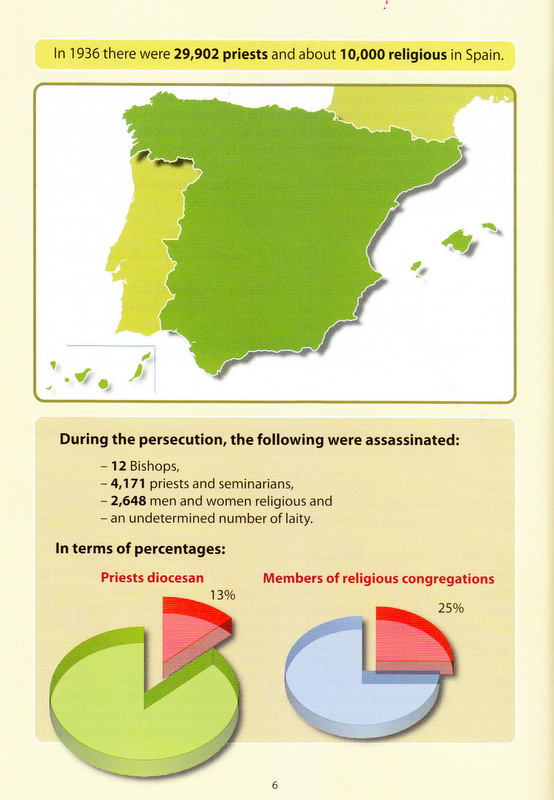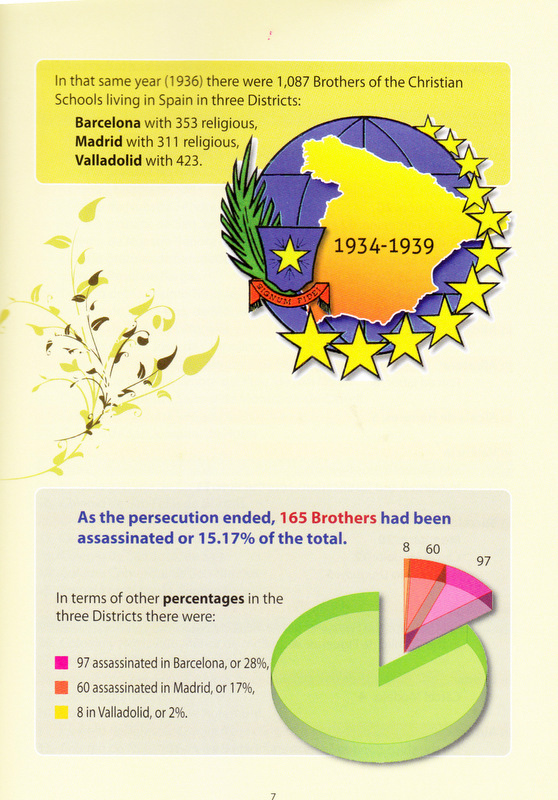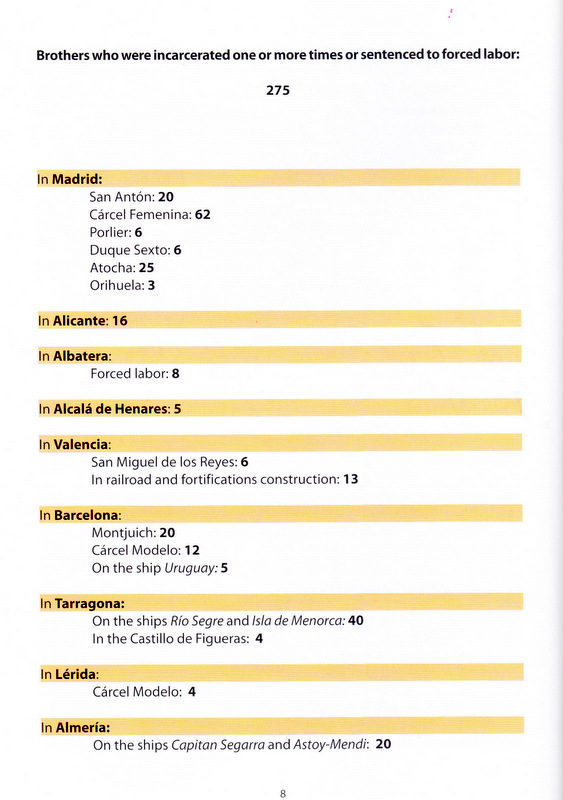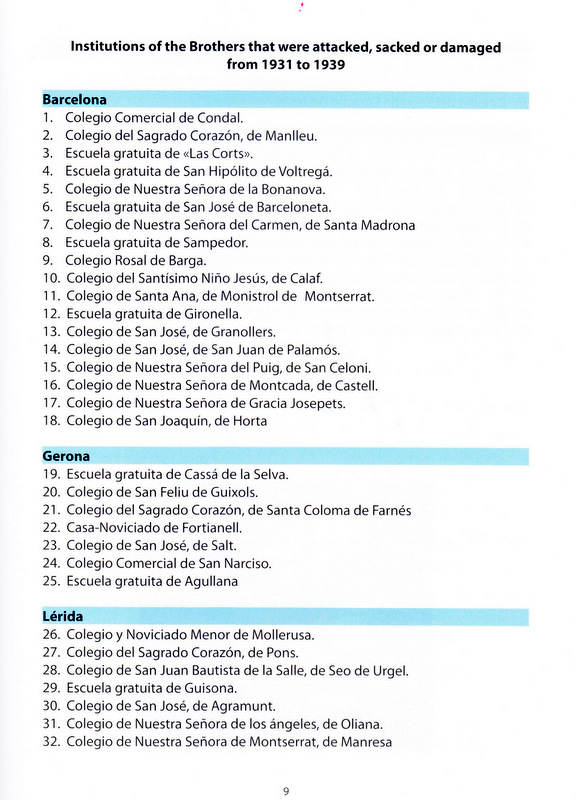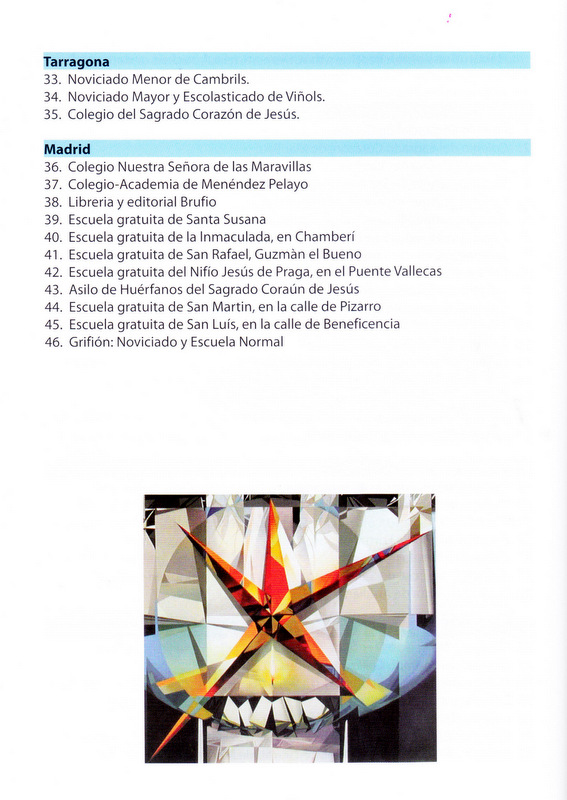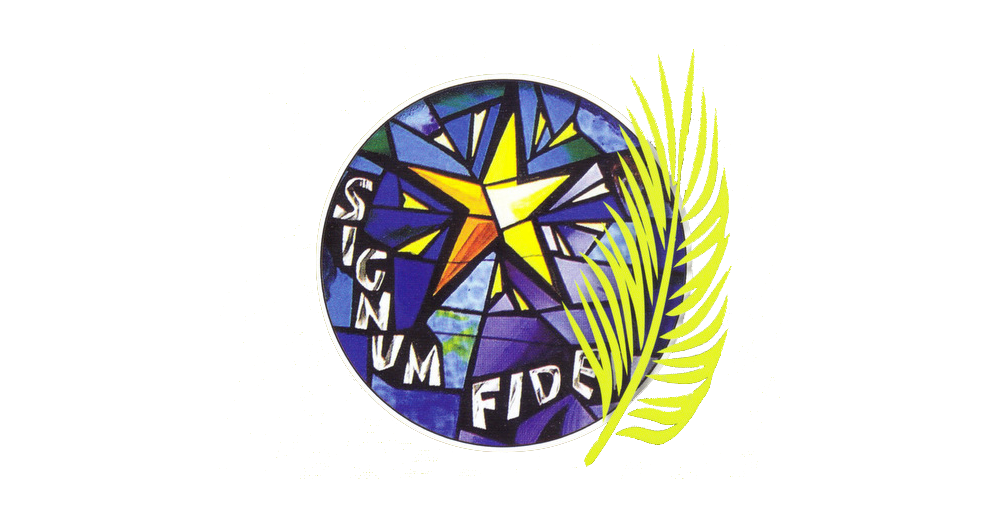The Second Spanish Republic, proclaimed on 14 April 1931, was marked by fierce anticlericalism. Just a month after its founding, fires broke out in churches in Madrid, Valencia, Málaga and other cities; the Government took no steps to prevent such acts and no attempt was made to find those responsible so that they could be brought before the law. The Church, even if not enthusiastic about this situation, for the good of Spain, showed a spirit of cooperation. These were the instructions which Pope Pius XI and the Bishops gave to Catholics. But the sectarian laws increased day by day. It was in this context that the Society of Jesus was suppressed and the Jesuits expelled.
During the Communist Revolution in Asturias (October 1934), the blood of many priests and religious was shed; among these were our Brothers of Turón.
During the first half of 1936, after the victory of the Popular Front acts with graver consequences were perpetrated as more churches were set on fire, crosses were destroyed, parish priests were driven away, burials and processions were forbidden, etc., and there were threats of even greater violence. This violence was unleashed with great fury after 18 July 1936. From then until April 1st, 1939 in the territory of the Republic began the most extensive religious persecution known to history since the time of the Roman Empire, Spain became a land of martyrs.
The clearest testimony of this persecution was offered by Manuel de Irujo, a Basque named Minister of the Republican Government with the intent to reestablish, if possible, an appearance of justice in the republican zone. At the beginning of 1937, during a Government meeting in Valencia (then the capital of the Republic), he presented the following memorandum:
“The actual situation of the Church, since July last, in all of the loyal areas except the Basque region, is the following:
a) All altars, images and liturgical objects, with very rare exceptions, have been destroyed, and for the most part with contempt.
b) All churches are closed to public worship, which has been totally and absolutely stopped.
c) A great number of churches have been burnt down, and in Catalonia this was done to order.
d) Parks and official organizations have received bells, chalices, monstrances, candelabras and other liturgical objects which they have melted down, even using the material for the war effort and for industrial purposes.
e) Churches have been turned into warehouses of all kinds: markets, garages, meeting halls, barracks, shelters and other such purposes.
f) All convents have been vacated and religious life has been eradicated. The buildings, liturgical objects and other possessions have been burnt, appropriated, occupied or demolished.
g) Priests and religious by the thousands have been detained, thrown into prison and summarily executed by firing squad. Such treatment, although on the decrease, is still going on, not only in rural areas – where priests and religious have been savagely hunted down and killed – but also in the towns. Madrid and Barcelona and the other big cities have hundreds of prisoners in their jails for no other reason other than the fact that they are priests or religious.
h) There is now an absolute prohibition against private possession of images or liturgical objects. The police responsible for making house searches, invading homes and people’s intimate personal and family lives, show contempt and violence in destroying images, prints, religious books and anything connected with religion or constituting a reminder of it.”
On 1 April 1939, the religious persecution and the civil war that had followed it came to an end. At the end of the persecution, the number of martyrs came to almost ten thousand: Bishops, diocesan priests, seminarians, men and women religious and several thousand lay people of both sexes, militants of Catholic Action and other apostolic associations. After a few years, the diocesan canonical processes began. Those that included our Brothers have been 11.
